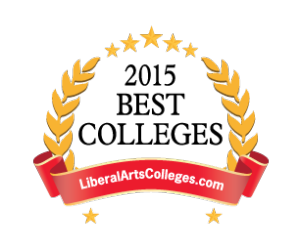Benjamin Franklin has been quoted as saying, “In this world nothing can be said to be certain, except death and taxes.” And he was right, of course, except that maybe one more item could be included on his list: yearly college rankings.
In this country, nothing is perhaps more certain that death, taxes, and the US News and World Report rankings of undergraduate schools.
Every year US News and World Report issues its “best school” lists in various categories ranging from “Best Colleges for Veterans” to “Best Party Schools” and everything in between. Alumni and prospective students flock to the magazine hoping to find their school of choice in the ranks. And if, after scouring the lists, their school is discovered among the golden ones, they win.
But what do they win?
Bragging rights. In truth, that’s about all the lists are good for.
Most college rankings are flawed for the following three reasons:
1. Rankings encourage schools to cheat.
Ironic, huh? Educational institutions, of all places, should be expected to keep their eyes on their own test, but it doesn’t always work that way. Falsified information is the dirty little secret of college rankings. In order to rank higher on the list, a growing number of colleges are willing to lie about enrollment numbers, graduation rates, and test scores. Several major news outlets, including NBC News have reported on this egregious “credibility gap,” spawning articles across the Internet that list colleges according to their ability to cheat and get away with it.
What benefit is there to telling the truth if the primary goal is to look good on a list vs. improve the quality of education in a school?
Some schools lie directly while others simply manipulate the data. The New York Times documented a case where one college offered a financial incentive for students willing to retake the SAT in an effort to raise their scores. Campus bookstore credits and merit scholarship aid was given to students who succeeded. Not really a lie, but not exactly the truth.
Rankings do not promote honesty.
2. Rankings depend too heavily on opinion.
For the past five years, U.S. News and World Report has ranked schools according to their “commitment to undergraduate training.” According to their own methodology, US News and World Report asks college presidents, provosts, and admissions deans to make the nominations. How many college presidents, provosts, and admissions deans actually frequent the classroom setting? Why not ask the students?
Also, rankings that primarily depend on opinion are, by nature, subjective. A question such as, “How committed is a school to undergraduate training?” is similar to asking a child, “Do you have a good parent?” One child may answer in the affirmative because his parents spend time with him, while another child may answer in the negative because his parents afford him less candy than he desires.
It should be noted that, according to the Washington Post in 2011, a whopping 22.5 percent of the ranking data was gained from the opinion of rival institutions and high school college admissions counselors. In other words, nearly one-fourth of the information that informed the college rankings was gathered from people who don’t spend much (if any) time on the campuses they ranked.
So the question moves from, “Do you have a good parent?” to, “Does your friend have a good parent?” which means the question is now both subjective and uninformed.
3. Rankings measure the wrong things.
The US News and World Report rankings do not measure college debt, nor are they helpful in lowering college tuition. College rankings cannot communicate how well students learn in any given environment or classroom, nor are they able to say with confidence if any school is right for a particular student.
Helpful to the list of college rankings would be transparency about faculty salaries, endowment size, and enrollment statistics. If a college is able to turn out a brilliant, successful graduate who was brilliant and successful before entering the school, how successful has that school really been?
Without this helpful information, comparing schools and ranking them without any nod to value would be like shopping for a house and ranking the choices without any insight about price, market value, or neighborhood. Too many factors are missing to make an educated decision.
Conclusion
Finally, it’s important to understand that college rankings should be taken seriously. As they currently stand, some rankings have the ability to harm students instead of help them.
In the years before college rankings became the golden calf of higher education, wealthy students paid in full to attend their school of choice. Colleges could then offer their available scholarship money to middle- and lower-class students who otherwise might be unable to attend. Once the rankings took center stage, colleges shifted their attention and scholarship money to wealthy students who could improve the face of their incoming freshman class and make the school look better on paper.
Bottom line: Schools that care too deeply about the yearly lists run the risk of sacrificing good education on the altar of higher scores.
Here at LiberalArtsColleges.com, we do rankings a bit differently. Our lists are based off of current student responses, meaning there is no data manipulation by administration or irrelevant opinions, only the facts and what students think about their schools.
Our rankings are designed to help make the college decision process easier for high school seniors (and inevitably, their parents). We have answers to important questions on our Rankings that Matter page, including collaborative environment and the influence of alcohol on campuses.
